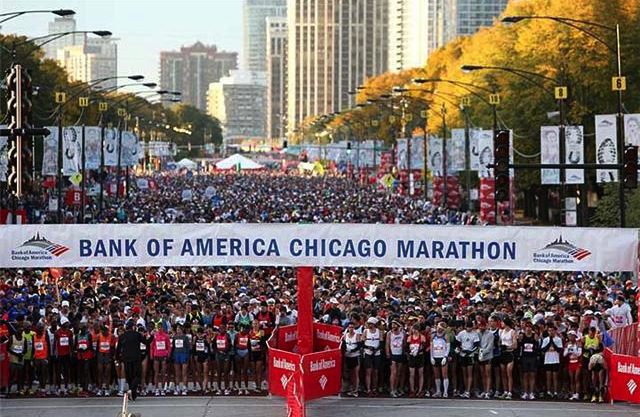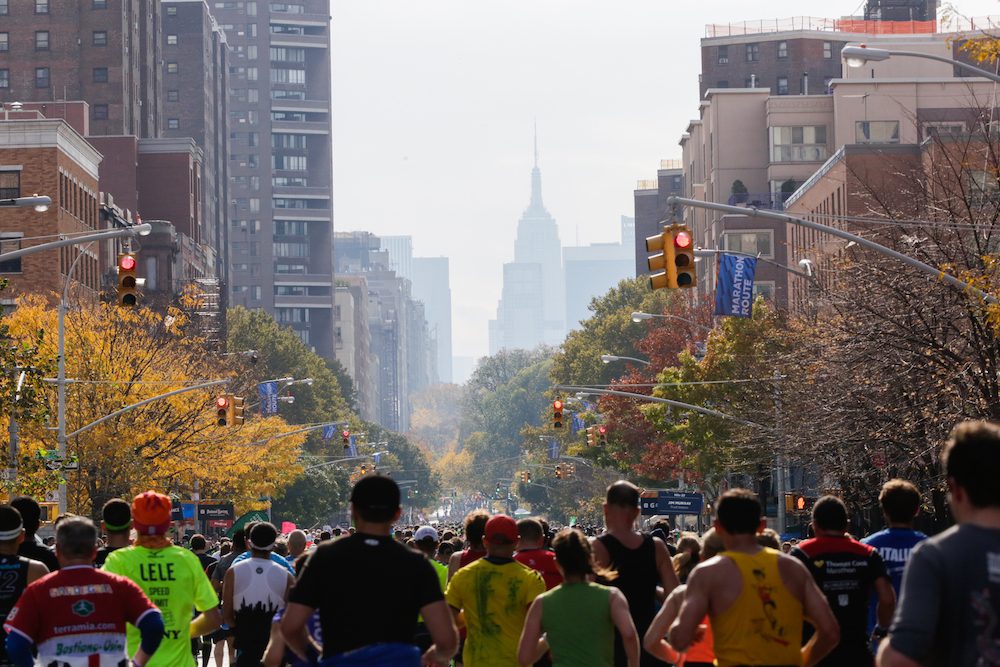Note to runners: never rely on your GPS watch during a big city race
GPS watches are often highly inaccurate when you're surrounded by tall buildings

Many runners are married to their watches and can’t fathom going out for any run or race without it. While watches are an excellent training tool to help us manage our pace and track our mileage, they’re not always the most accurate, especially when you’re in the middle of a big city, surrounded by skyscrapers. For this reason, if you’re running a big city road race, you’re better off leaving the watch at home.

RELATED: How to measure distance without a GPS watch
Case in point: the Chicago Marathon. The windy city is known for its impressive architecture, but those buildings make getting an accurate GPS signal to your watch impossible. In fact, the Chicago Marathon is notorious for this, and most GPS watches will be rendered useless by the time you get to the first mile marker.
Chicago is just one example of how tall buildings can get in the way of an accurate GPS reading, and this will be a problem in any big city race you sign up for. So what are runners supposed to do? The idea of leaving your watch at home on race day may send shivers running up many runners’ spines, but trust us when we say that getting inaccurate pacing data will do more harm than good. Luckily, most races will have kilometre or mile markers out on the course, so as long as you know what your splits should be, a regular stopwatch will be more than adequate.
The course tour in Chicago provided a huge reminder that we will use as a big takeaway. DO NOT USE ANY GPS DEVICE IN A MAJOR CITY FOR PACING PURPOSES. It is important to learn pacing so as to not be come dependent on GPS. Old school is the best. Split your watch at the mile marks
— hansonsrun (@hansonsrun) September 6, 2021
Yes, that means you’ll have to do a bit of math beforehand and yes, that also means you’re going to have to remember your splits for each kilometre of the race. This isn’t so bad when you’re running a 5K, but 42 kilometres worth of splits in a marathon is a much taller order. If you don’t think you’ll be able to remember every one (or don’t trust yourself to do mental math out on the course), there’s a simple solution: write them down. You can write them on a small piece of paper, on your arm, or wherever you want, but make sure you have them somewhere that’s easily accessible. And remember if you’re running a race in the U.S. to make sure you know your mile splits, in case kilometre markings aren’t available.
The issue of inaccurate GPS readings highlights another important skill many runners neglect to practice: pacing. Getting constant feedback from your watch to know exactly how fast you’re running is helpful, but if you rely on it too heavily you’ll be completely lost when your watch dies part-way through your run or race. It’s a good idea to turn off the GPS once in a while during your training and practice pacing without it so that you know how different paces feel intuitively. A track is a great place to practice this because you can check splits with a regular stopwatch, but if you know where the kilometre markings are on one of your regular routes, that works just as well.

RELATED: Why you should try running without a GPS watch
So no, you don’t have to break up with your GPS watch just yet, but when it comes to big city races, you’re better off using an old-school stopwatch and the course markings. They’ll be more reliable, anyway.

